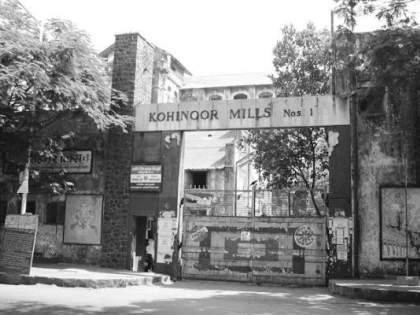In India, geography forms a canvas against which Indian culture and traditional knowledge are conceptualized, interpreted, and practiced. The living traditions of India epitomize culture in all its manifestations in an exceptional architectural ambiance. Our heritage is the combined creation of man and nature strongly linked to the living cultural tradition and makes up the environment in which we live in space and time. It is a rich inheritance of knowledge passed on from generation to generation. The philosophical understanding of our heritage lies in this spiritual connection with nature. This results in dynamic sites that continue to adapt to human needs, maintaining the continuum for our communities.

However, formal conservation praxis grounded in identifying and restoring pure typologies can weaken the complex, accretive, and dynamic grain of Indian cities. Our historical narratives often sideline the diverse cultural heritage that forms the ethos of our country. One such case is of Gwalior in Madhya Pradesh.
A city that has emerged from the tough mores of its hinterland still manages to find a respectable place in history. The city has evolved across diverse empirical layers. The cultural landscape of Gwalior forms a unique confluence of diverse religious beliefs that live in harmony. It is one of India’s oldest continuously inhabited cities, where terrain plays a very important role. The spirit of Gwalior lies in its royal influence and local communities that have preserved its oral tradition and ancient knowledge system. The unique confluence of history, mythology, intangible heritage, cultural expressions, and urban form is expressed through the heritage repository. These living cultural traditions epitomize culture in all its manifestations.
Its beginning is very humble. Its origins can be traced back to antiquity. But it became visible on the map during the Gurjara-Pratiihara dynasty, which was responsible for patronizing Jainism and building rock-cut temples such as Chaturbhuja Visnu. Due to its strategic location and geographical terrain, many rulers seized Gwalior. During the Tomara rule, Gwalior observed all-around progress in administration, literature, and economic development. The fortified Badalagarh, Mana Mandir, Gujari Mahal, and many other monuments testify to the Tomara dynasty. The fort itself formed an intricate and pious complex, and it houses notable palaces such as the Badal Mahal and Jahangir Mahal. Suraj Kund, Trikonia Tal, Johara Tal, Mansorvar, and many other ponds and baolis add to the beauty of Gwalior. After that, during the Mughal period, the Gwalior fort was used as a bastille where royal prisoners were held captive.
Apart from monumental evidence, one might find interesting stories within the old city. The streets along the contours show an organic fabric leading to introverted houses. Each mohalla was defined by the communities residing and their occupation. They had a distinct language of houses and community spaces. For example, Rajmandi, Kashinaresh ki gali, etc. This also resulted in many art forms, such as carpet weaving and doll making. The city is also known for its knowledge of classical music. The Gwalior gharana evolved during Akbar’s period. ‘Tansen learned Hindustani classical music from Mohammad Ghaus and developed the Gwalior Gharana style of music’ (Incredible India). During the British period, however, it served as a military camp. Morar, located to the east of the fort, was developed as a cantonment. The fort was handed over to Scindias, one of the wealthiest rulers. During the late 19th century, Lashkara was basically extended to be planned as a royal enclave. Eminently regal in style, Gwalior evolved industrially and architecturally, leaving an enduring culturally rich legacy. It forms a plethora of diverse cultures and knowledge systems.

However, one can observe the urban fabric to be disintegrated. The historic evolution accentuates the shift in the centres of the city without integrating the previous layers, from a fortified complex to Maharaja Bada, which has left our cultural legacy in ruins. This has resulted in a lack of interpretation of the city’s unique character. It is extremely important to look deeper than what lies on the surface. Traditional knowledge and management systems are on the verge of oblivion but form the basis of urban form and planning practices. The current development plan proposed the inclusion of a conservation plan, but the guiding policies limit themselves to physical attributes. The river Swarnrekha, the natural heritage, was duly recognized in the urban planning of the city of the yesteryears. Yet, in the current Development Plan, there is no special reference to it, nor can it be found in the given list of conservation areas/ spaces. (Context 8, Dronah). There is no regulation to maintain and protect the natural terrain of the fort that forms a part of the water catchment for many tanks and lakes.
There is a need for a holistic and integrated approach to safeguarding urban heritage. The vision should be developed to reinforce continuity and maintain the everydayness of heritage. It should provide regulatory guidelines for its urban imagination through spatial, visual, sacred, and temporal layers to understand better, manage, and conserve the rate of change in the Indian cultural landscape. This would activate underutilized spaces where people can associate with and feel engaged. The overriding goal should be to manage urban continuity and change to retain tangible and intangible values. This would, in turn, strengthen the spirit of the place. Strategy formulation through a structured plan representing a phase-wise implementation would guide the holistic imagination of Gwalior’s urban heritage.
Note: All the images are shared by the author.
Bibliography
The Imperial Gazetteer of India: The Indian Empire Vol.1. Descriptive, 1907, Oxford, Clarendon Press.
Mathur, Mohan Kumar, (2006), Echoes from the History of Gwalior, Dr. Harihar Nivas Dvivedi Research Foundation, Gwalior
Jain, L C (1950), Madhya Bharat in 1948- 49- an Economic Review, Department of Economic Intelligence and Statistics, Madhya Bharat, Indore.
Nalini Thakur.2012, Indian Cultural Landscape, SPA Delhi. Rana P.B. Singh, 2013. Indian Cultural Landscape.
Nagi Sinha, Amita 2006. Landscapes in India: Forms and Meanings. University Press of Colorado, Boulder.
Singh, Rana P.B. 1987. Toward myth, cosmos, space, and mandala in India. A search in the geography of belief systems.
Ashima Krishna and Manish Chalana, 2015. ‘Heritage Conservation in Postcolonial India’






